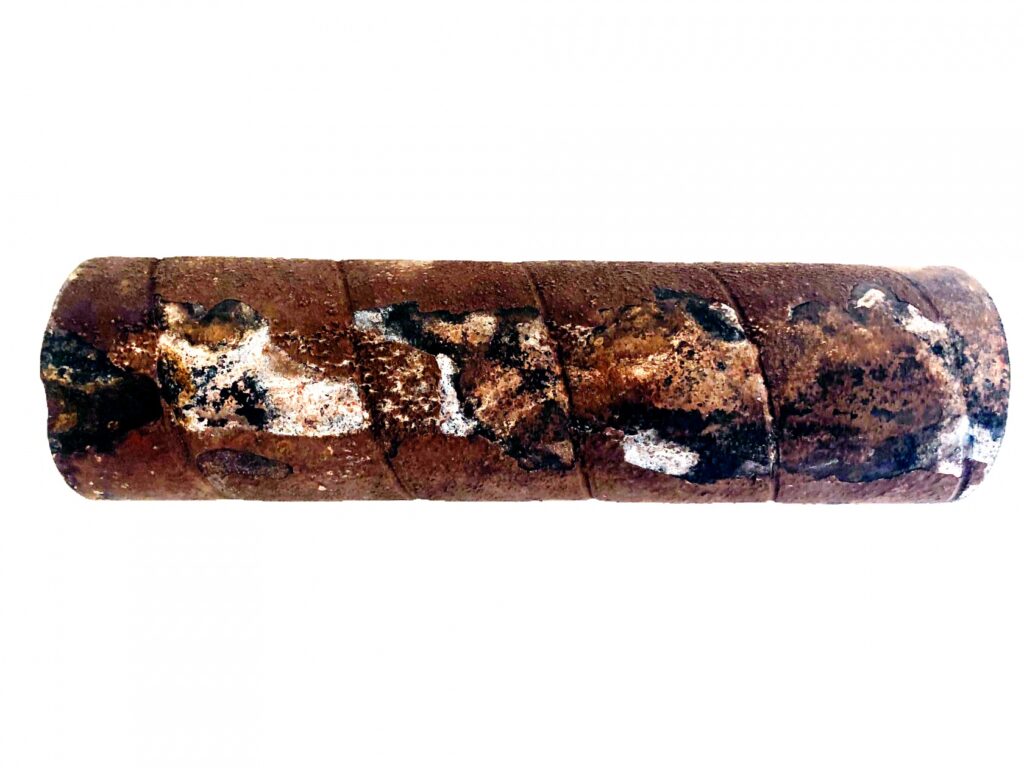Boiler tube failures at global chemical manufacturer leads to review of water treatment programmes on site
Importance of partnership approach between supplier and manufacturer is the key to good water treatment results
Situation
A large global resin producer of with manufacturing operations in New Zealand was having water treatment problems at one of their sites. Ongoing concerns came to a head when the main steam boiler suffered several tube failures. The boiler, a firetube design, was commissioned only 3 years previously and was now requiring replacement of 30% of the tubes, so the situation was very concerning to plant management.
Therefore, Visentia was asked to review water treatment practices on site and come back with some recommendations.
A full system audit of the steam cycle and cooling systems was conducted by Visentia that found widespread water treatment problems:
Boiler and Steam System
1. Metallurgical examination of the failed boiler tubes showed large areas of corrosion typical of ‘under-deposit corrosion’. The deposits were found to be largely iron-based.
2. Condensate pH was found to be acidic (~6.0) and high levels of iron (up to 1 ppm) were also present.
3. Boiler chemicals were being diluted with untreated water, which is not good practice because it introduces hardness into the boiler.
4. Review of operator log sheets showed that chemical treatment residuals in the boiler water were frequently out of the recommended range and chemical dosing was not reliable due to what was suspected as empty chemical tanks and pump failures.
5. Conclusion was that main cause of boiler failure was due to condensate corrosion leading to elevated levels of iron returned the boiler. Secondary factor was poor control of internal boiler treatment programme, both resulting in deposits and under-deposit corrosion.


Plates 1 & 2: Boiler firetube sample showing area and depth of under-deposit corrosion.
Cooling System
1. Biofilm was found in the packing of one cooling tower, which was of sufficient volume and weight to be reducing cooling capacity and was in risk of collapsing the tower.
2. The chemical treatment programme was not ideal for the water chemistry on site, leaving the system with no margin for error on control, so scaling conditions were occurring regularly.
3. The chemical dosing system was observed to be running out of chemical frequently leaving the cooling system unprotected for long periods.
4. A plate heat exchanger cooling one of the reactors was frequently becoming completely full of scale. This required the plant to take unscheduled downtime to remove and acid clean the plates, which was reducing operating profits and running the risk of not meeting customers’ orders.
5. Conclusion was that the chemical programme was not well-designed, and the chemical dosing system was poor, leading to scale and biofilm fouling of cooling tower and heat exchanger.
Solution
Visentia worked with the customer to implement the following improvements on site:
1. Correct design of new chemical programmes based on actual operating conditions and water chemistry.
2. Installation of new dosing systems for the cooling tower and boiler chemicals, utilising neat dosing of chemicals and P&ID controllers.
3. Mutually agreed service plan with Visentia personnel visiting site to check the water chemistry and chemical dosing on a fortnightly basis.
4. Addition of a volatile corrosion inhibitor treatment to the condensate system, which had not previously been done.
5. Comprehensive Legionella risk management plan put in place to mitigate occupational health and safety concerns associated with biocontrol of the cooling water.
Results
Since implementation of the recommendations, the site have experienced significant benefits. The plate heat exchangers on the cooling system no longer need to be removed and cleaned resulting in significant improvement in plant uptime and efficiency. The condensate system has seen a tenfold reduction in the amount of iron returning to the boiler. The reduced condensate corrosion combined with improved control of the boiler chemistry have stopped deposition on the boiler tubes and eliminated tube failures, thereby protecting this asset and not interrupting plant production.
Conclusions
This case study demonstrates that poor attention to water treatment best practices will manifest itself in very significant ways to the bottom line of a manufacturing plant. Unplanned plant outages causing production loss and destruction of expensive assets due to corrosion are very real and expensive consequences.
Choosing a reputable water treatment supplier that is committed to onsite presence and service, implementing good operating practices and attention, and having a good working partnership between supplier and customer are keys for success in water treatment.
Further Information
For a pdf verson of this Case Study please click here.
If you require any further details on Visentia’s total system approach to water treatment, please call your local Visentia water treatment consultant or directly to our Auckland head office on +64 9 216 9824.

